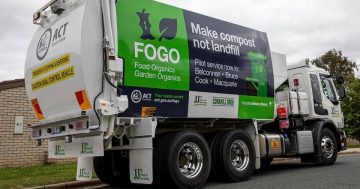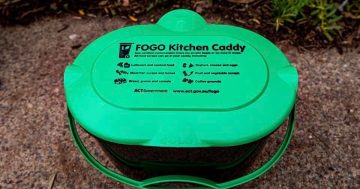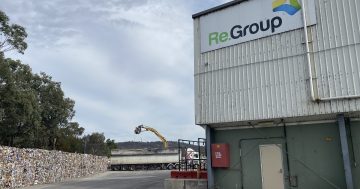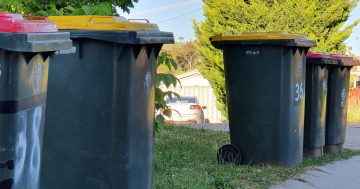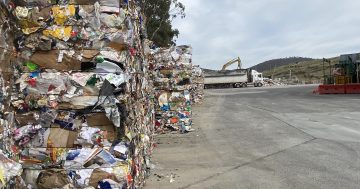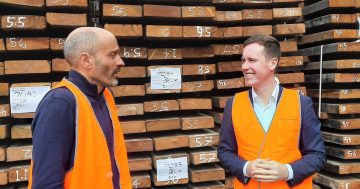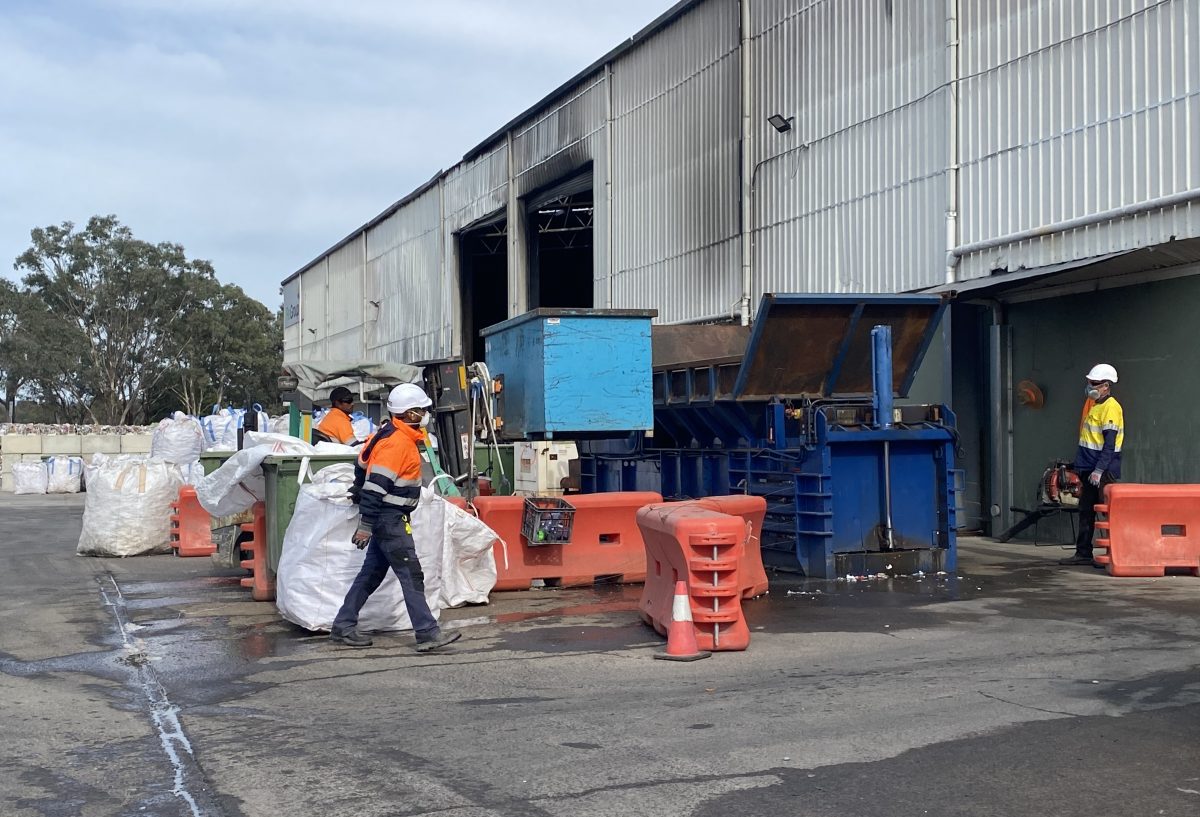
Recycling waste can still be sorted at the destroyed Hume Recycling Facility before it is trucked interstate. Photo: Claire Fenwicke.
Years have been added to the expected opening dates of local waste processing facilities as a result of the Boxing Day fire at the Hume centre.
Originally flagged for 2024, the Territory’s new Materials Recovery Facility (MRF) is now anticipated to be operational in 2025, while the ACT’s first Food Organics and Garden Organics (FOGO) processing facility has been pushed back further until “around 2026”.
Funding for both projects has previously been committed to by the Federal Government.
City Services Minister Chris Steel said the new MRF had been flagged as a priority for the government.
“Building a new recycling facility has to be the priority after the Boxing Day fire to ensure that we have the basic infrastructure to process and recycle materials in yellow bins,” he said.
“The costs associated with transporting the ACT’s recycling to processing facilities … as far away as Victoria is unsustainable in the long run.”
The original Hume MRF was destroyed in the 2022 Boxing Day fire, which was caused by incorrectly binned batteries spontaneously combusting.
The new processing hub will be located on the same site as the existing facility, utilising part of the adjoining block in the Hume Resource Recovery Estate.
Mr Steel said it will be designed to have an increased processing capacity of up to approximately 115,000 tonnes per year to provide for the future growth of Canberra.
“Modern technologies will provide better sorting capabilities at the new MRF with the development of additional products including glass, plastic recovery, and better bailing processes including for the Container Deposit Scheme,” he said.
The destroyed site is still able to be used to sort materials collected from the ACT’s Container Deposit Scheme, as well as other materials, before they are loaded onto trucks to be processed interstate.
The ACT Government has opened consultation on an environmental impact statement (EIS) for both facilities, with the operational timeframes subject to environmental and planning approvals and procurement processes.
Mr Steel said a single-stage tender would expedite the new MRF.
“A pre-tender notice will be released next month about the MRF project to inform the market and generate interest,” he said.
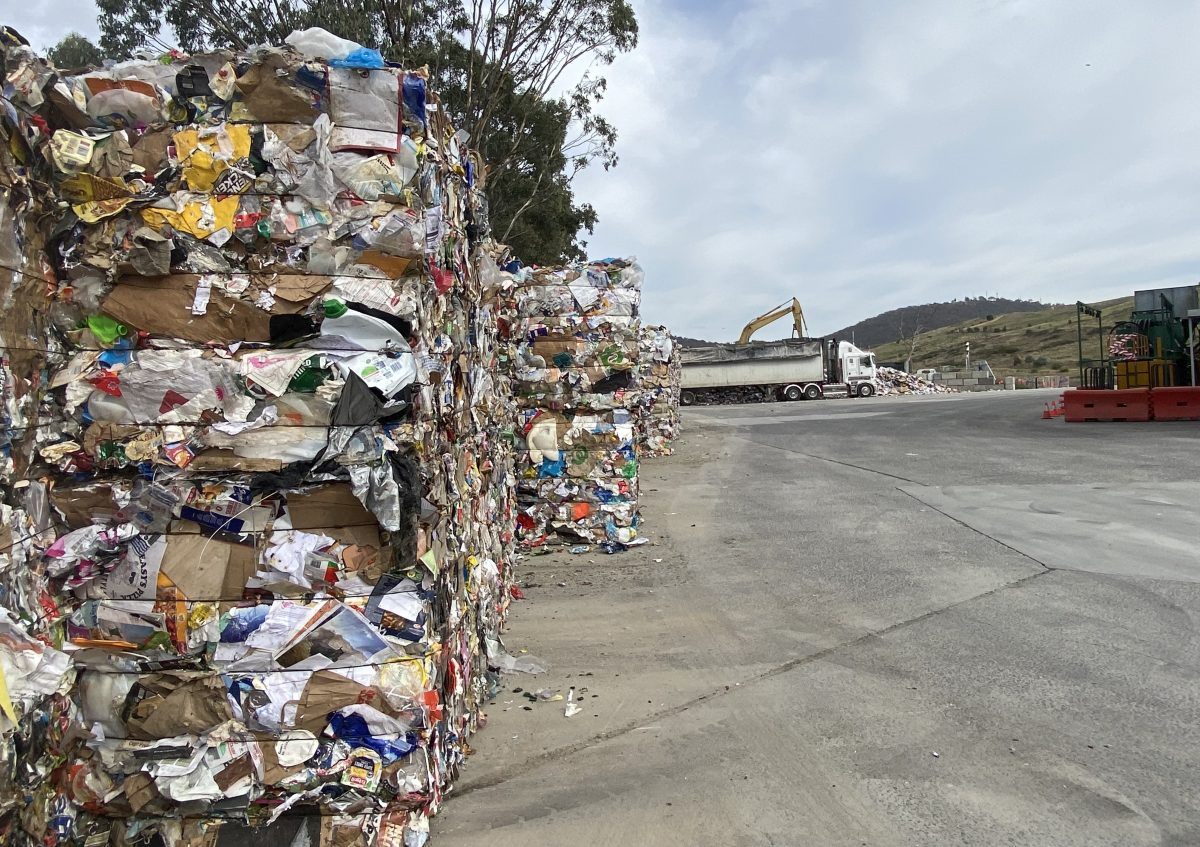
Canberra’s recycling waste is currently being trucked to various processing facilities in Sydney and Victoria. Photo: Claire Fenwicke.
As the Territory waits for its own FOGO composting facility, the collection pilot currently underway in Belconnen will continue.
This means a city-wide rollout of the scheme will have to wait until at least 2026.
Mr Steel said the new FOGO facility was expected to have the capacity to process more than 50,000 tonnes of compost each year. It’s proposed for Block 5, Section 26 in the Hume Resource Recovery Estate.
Mr Steel said both the MRF and FOGO facilities would include measures to help alleviate potential noise, traffic and odour impacts.
“The composting facility is proposed to be an in-vessel facility, with indoor composting tunnels minimising odour risk,” he said.
The facilities are part of the ACT Government’s commitment to meet the National Waste Action Plan targets, which include halving organic waste sent to landfill by 2030.
They’ll also help the Territory build a circular economy when it comes to managing waste.
“With organic waste decomposition in landfill accounting for more than 7 per cent of Canberra’s greenhouse gas emissions, it remains important that we divert organic waste from going into landfill and have the capacity to recycle it here at scale into valuable compost,” Mr Steel said.
Meanwhile, the ACT Government has released listening reports from consultations on additional single-use-plastic bans and the draft Circular Economy Strategy.
New single-use plastics proposed to be banned in the Capital include microbeads found in cosmetic, cleaning and personal care products, more polystyrene products, plastic plates and bowls, plastic takeaway containers, and heavyweight and boutique bags.












